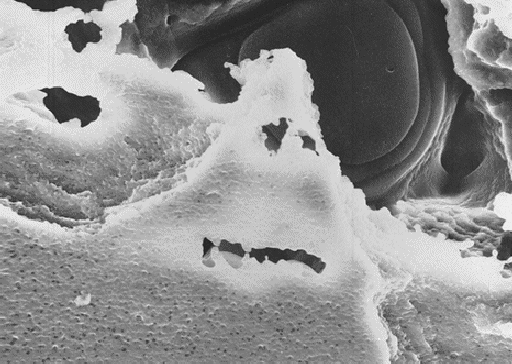 |
 |
This scanning electron spectre is the result of exfoliation corrosion of a nearly pure magnesium alloy. Slabs of atomic planes of magnesium have been perforated and spread apart during the corrosion process, whose products occupy a larger volume fract ion than the equivalent atomic concentration of crystalline magnesium.
This "ghost's" bright outline is likely due to the thinness of the specimen in these areas, enhancing secondary electron emission. Additionally, in these regions a layer of oxide may have survived the chromic acid treatment used to remove the bulk of the corrosion products. The "moon" in the background is a smaller grain of magnesium whose particular crystallographic orientation relative to the sample surface gave it an improved resistance to exfoliation. The fact that it remains in contact with the bu lk of the sample accounts for its difference in secondary electron emission, and hence its darker contrast.
The large depth of field available in scanning electron microscopy lends a "three dimensional" feel to samples with rapidly varying topographic features.